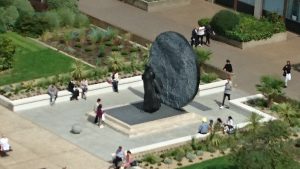Tell us your story and inspire others.
Mary Seacole statue at St Thomas Hospital, Westminster Bridge, London *.
We believe that the stories we tell ourselves and each other are the most powerful tools we have in overcoming the hardships and difficulties that face us in life.
We are currently researching stories for inclusion on this website.
If you have a story of overcoming a difficulty or obstacle in your life and would like to share it on these pages, please send it to “resiliencefoundry@gmail.com”
You can use the following questions for guidance or as headings.
Resilience Questions
What happened? What was the obstacle, trauma, setback or bad experience/s that you needed to overcome in order to progress in your life.
How did you react to this? Did you react differently at different ages/times in your life?
What helped you/enabled you to overcome and move beyond these circumstances?
What do you think the impact has been, positive and negative.
Do you think these experiences have changed your character or behavior in any ways you haven’t already mentioned?
Stories will be shared anonymously.
If your story is included it may be edited or adjusted slightly for example to remove any identifying details to ensure your anonymity or the anonymity of others in your story.
By sharing your story you can help someone else get through the hard times. We look forward to hearing from you.
*Mary Seacole was a pioneering nurse and heroine of the Crimean War, who as a woman of mixed race overcame a double prejudice.
Mary Jane Grant was born in Kingston, Jamaica in 1805. Her father was a Scottish soldier, and her mother a Jamaican. Mary learned her nursing skills from her mother, who kept a boarding house for invalid soldiers. Although technically ‘free’, being of mixed race, Mary and her family had few civil rights – they could not vote, hold public office or enter the professions. In 1836, Mary married Edwin Seacole but the marriage was short-lived as he died in 1844.
Seacole was an inveterate traveller, and before her marriage visited other parts of the Caribbean, including Cuba, Haiti and the Bahamas, as well as Central America and Britain. On these trips she complemented her knowledge of traditional medicine with European medical ideas. In 1854, Seacole travelled to England again, and approached the War Office, asking to be sent as an army nurse to the Crimea where there was known to be poor medical facilities for wounded soldiers. She was refused. Undaunted Seacole funded her own trip to the Crimea where she established the British Hotel near Balaclava to provide ‘a mess-table and comfortable quarters for sick and convalescent officers’. She also visited the battlefield, sometimes under fire, to nurse the wounded, and became known as ‘Mother Seacole’. Her reputation rivalled that of Florence Nightingale.
After the war she returned to England destitute and in ill health. The press highlighted her plight and in July 1857 a benefit festival was organised to raise money for her, attracting thousands of people. Later that year, Seacole published her memoirs, ‘The Wonderful Adventures of Mrs Seacole in Many Lands’.
Mary Seacole died on 14 May 1881. (http://www.bbc.co.uk/history/historic_figures/seacole_mary.shtml)
